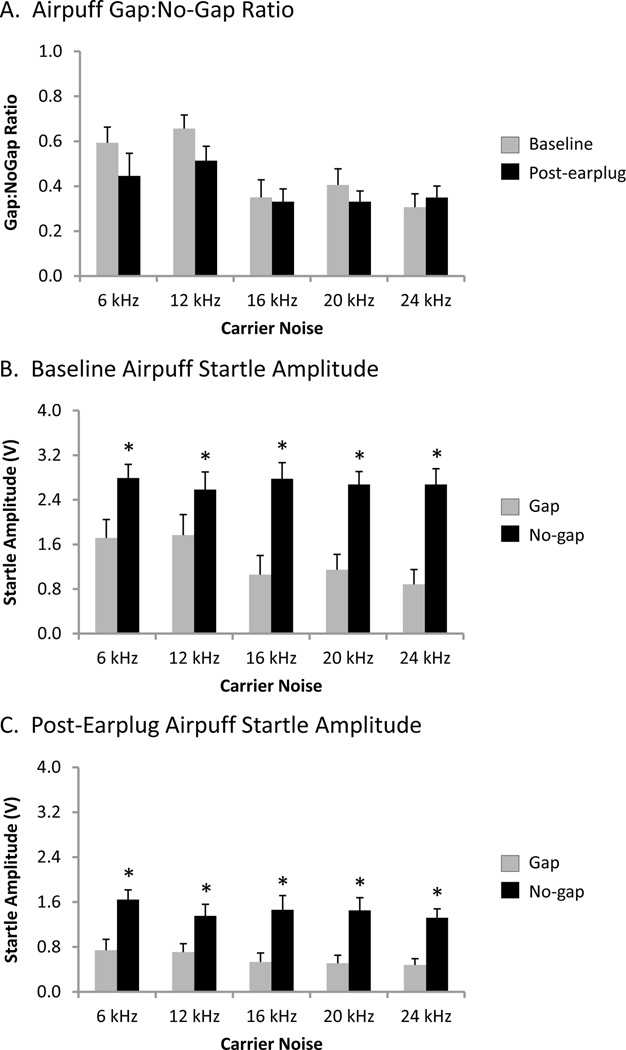Figure 7.
Airpuff gap prepulse inhibition of the startle response (A) and raw startle amplitudes during gap and no-gap trials before (B) and during (C) unilateral conductive hearing loss. (A) The group mean airpuff gap:no-gap ratio did not differ between baseline and post-earplug conditions at any carrier noise frequency (two-way repeated measures ANOVA and Student-Newman-Keuls post hoc tests, P>0.05). At baseline (B) and during unilateral conductive hearing loss (C), the group mean airpuff startle amplitude during gap trials (grey) and no-gap trials (black) were above the noise floor (baseline: 0.043±0.004 V; post-earplug: 0.040±0.002 V) at all carrier noise frequencies. Furthermore, the group mean airpuff startle amplitude during gap trials was significantly lower than during no-gap trials at all carrier noise frequencies during baseline (B) as well as during unilateral conductive hearing loss (C) (two-way repeated measures ANOVAs and Student-Newman-Keuls post hoc tests, * P<0.005). Note the 10-fold increase in ordinate scaling in panel C versus Figure 5C. Values represent mean ± SEM for n = 6.

